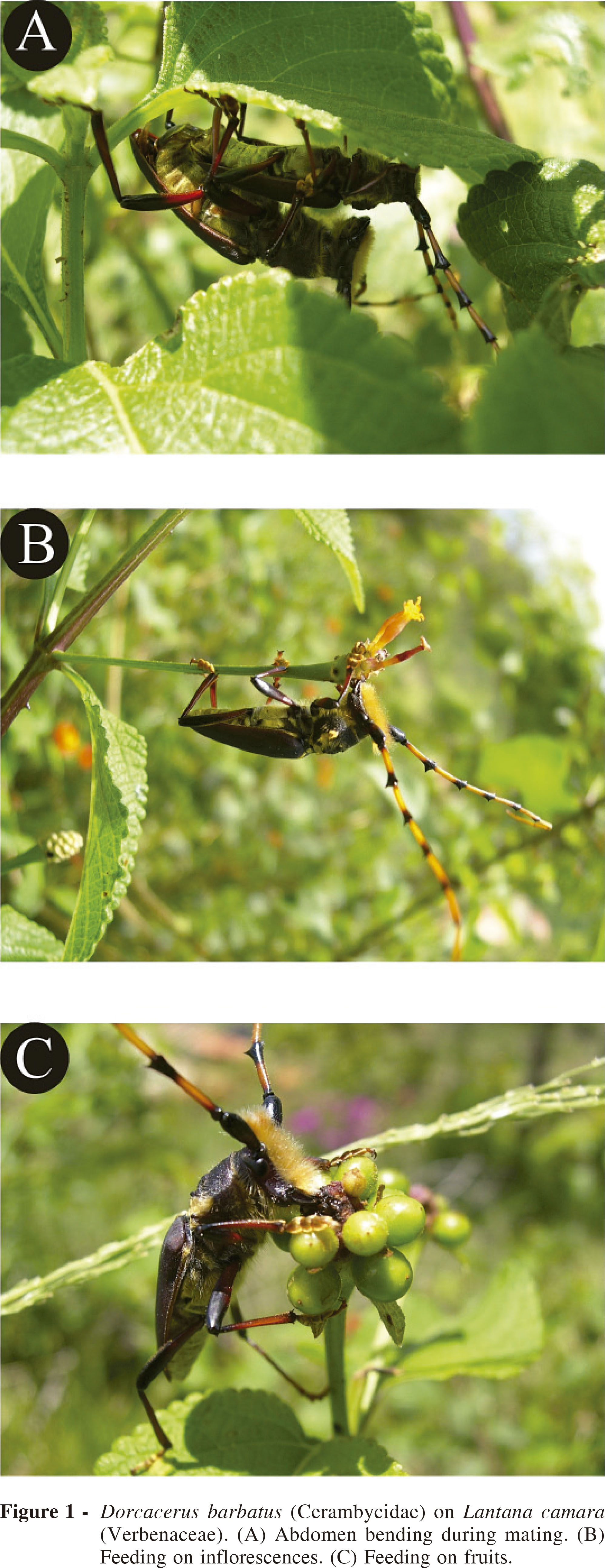Alimentação e acasalamento de Dorcacerus barbatus (Olivier, 1790) (Coleoptera: Cerambycidae) sobre Lantana camara L. (Verbenaceae)
DOI:
https://doi.org/10.35699/2675-5327.2008.23817Palavras-chave:
Biological control, invasive species, insect behavior, herbivory, Atlantic Rain ForestResumo
In this study we describe the mating behavior of Dorcacerus barbatus (Olivier, 1790) and its predation on the reproductive parts of Lantana camara L. (Verbenaceae) in a restored area of Atlantic forest, in southeastern Brazil. Lantana camara is regarded as one of the world’s ten worst weeds. We found three species of longhorn beetles on this plant: Trachyderes succintus duponti Aurivillius, 1912, Andraegodius rufipes zonatus (Dalman, 1823), and D. barbatus; this last species represented more than 95% of all individuals found. This is the first record of these three cerambycid species on L. camara. We observed a sequence of mating-behavior stages: jousting, antennation, holding, mounting, fighting, licking, abdomen bending, and copulation. D. barbatus destroyed 60% of the reproductive parts during the mating process. These primary observations indicate that D. barbatus may be considered as a potential biocontrol agent for this invasive species.

Downloads
Publicado
Edição
Seção
Licença

Este trabalho está licenciado sob uma licença Creative Commons Attribution-NonCommercial 4.0 International License.
